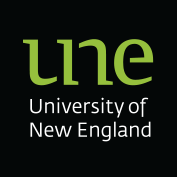WHAT DOES IT COST TO EDUCATE A UNIVERSITY STUDENT IN AUSTRALIA?
University of Melbourne
The Melbourne Centre for the Study of Higher Education and the Pilbara Group have released a working paper that analyses anonymised cost data from the 2019 academic year at 11 Australian universities to help gain an understanding of the impact of the following on the cost of delivering education:
* Field of Education
* Qualification Level
* Mode of Delivery
* Campus Location
* Subject Size
A summary of the findings is outlined in the table below.
Of significance to UNE given our student cohort is the finding that postgraduate subjects increase the cost of delivery by up to 15% (with the cluster rate not even matching mean cost per EFTSL for Bachelor courses in some clusters and that regional campuses cost up to a fifth more to run than metropolitan campuses.
Department of Education, Skills and Employment
In what has become a monthly tradition the Government has made another announcement on encouraging collaboration and commericalisation outcomes.
The Government is providing $242.7 million to 2025-26 to support select universities (“Trailblazer Universities”) for prioritised research and development including $30 million for participating universities to partner with CSIRO and access specialist equipment to “supercharge their research translation and commercialisation capabilities”.
Priority areas are outside of UNE’s current areas of expertise and include:
* Defence;
* Space;
* Food and beverage;
* Medical products;
* Recycling and clean energy, and resources technology; and
* Critical minerals technology.
AUSTRALIA'S LONG -TERM EMISSIONS REDUCTION PLAN
Department of Industry, Science, Energy and Resources
In late October the Federal Government released its plan to achieve net zero emissions by 2050. The Plan is based on five key principles (outlined below), “with an enabling role for government”.
1.Technology not taxes – no new costs for households or businesses,
2. Expand choices, not mandates – we will work to expand consumer choice, both domestically and with our trading partners
3. Drive down the cost of a range of new energy technologies – bringing a portfolio of technologies to parity is the objective of Australia’s Technology Investment Roadmap
4. Keep energy prices down with affordable and reliable power – our Plan will consolidate our advantage in affordable and reliable energy, protecting the competitiveness of our industries and the jobs they support, and
5. Be accountable for progress – transparency is essential to converting ambition into achievement. Australia will continue to set ambitious yet achievable whole of-economy goals, then beat them, consistent with our approach to our Kyoto era and Paris Agreement targets.
A graphical summary of the plan follows, with a clear role for UNE’s researchers across almost all pillars.
It is supported by five existing strategies:
Supporting strategies include:
* Technology Investment Roadmap: the main strategy guiding Australia’s technology-first approach to emissions reduction.
* National Hydrogen Strategy: developed with state and territory governments, this strategy sets a vision for a clean, innovative, safe and competitive hydrogen industry that benefits all Australians.
* Modern Manufacturing Strategy: a strategy for Australia to be recognised as a high-quality and sustainable manufacturing nation that helps to deliver a strong, modern and resilient economy for all Australians.
* Critical Minerals Strategy: will position Australia as a leading global supplier of the minerals that will underpin the industries of the future.
* Global Resources Strategy: a strategy to diversify and strengthen Australia’s resource export markets.
PREFACE - THE FUTURE OF JOBS REPORT 2020
World Economic Forum
...The Future of Jobs Report provides the timely insights needed to orient labour markets and workers towards opportunity today and in the future of work.
PwC's 23rd ANNUAL GLOBAL CEO SURVEY: NAVIGATING THE RISING TIDE OF UNCERTAINTY
PwC
What is clouding the view from the top? In a word, uncertainty. PwC’s 23rd Annual Global CEO Survey, which involved 1,581 chief executives in 83 territories, explores the sources and manifestations of uncertainty and how CEOs are taking action to address it.
NSW HIGHER EDUCATION STRATEGY 2021 - 2025
NSW Department of Education
NSW Government is partnering with universities and other higher education providers in bold and innovative ways to address social, economic and environmental challenges, both locally and globally.
UNIVERSITY RESEARCH COMMERCIALISATION CONSULTATION PAPER
Department of Education, Skills and Employment, Australian Government
In this paper the Government is seeking comment on issues that impact on five research commercialisation. Submissions close 9 April.
COALDRAKE REVIEW OF HIGHER EDUCATION PROVIDER CATEGORY STANDARDS
Department of Education, Skills and Employment, Australian Government
The 2017-18 Commonwealth Budget Higher Education Reform Package included a measure to undertake a review of the PCS to ensure they support the Australian Government's goals for a diverse high quality higher education sector that meets the needs of students, employers, the sector and the wider community.
THE TIPPING POINT FOR DIGITISATION OF EDUCATION CAMPUSES
Vector Consulting
Vector Consulting was commissioned by Cisco and Optus to understand how universities and TAFEs are re-imagining teaching, research, administration and campus design.



